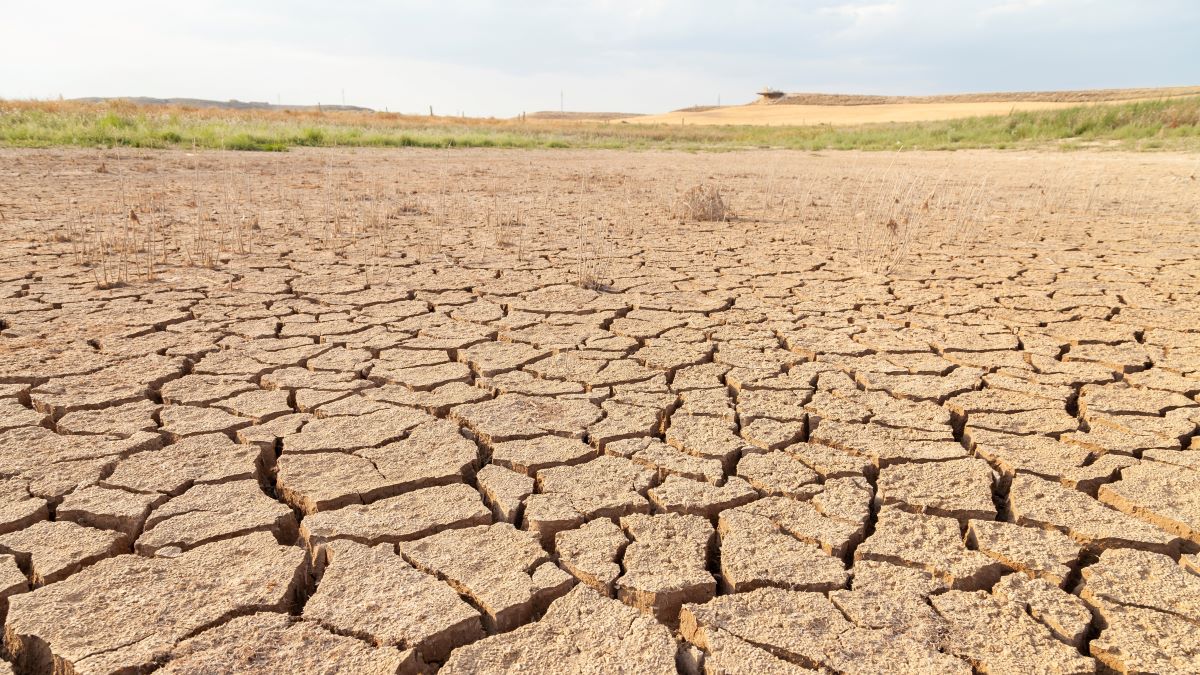No matter where you live, increasingly frequent heat waves and droughts may have you feeling like your hometown is turning into a desert. And you might not be wrong – deserts make up more of the planet than they did a few decades ago, and that amount is still expanding. Although the area classified as desert is growing, technically speaking, what is happening is the degradation of other landscape types into desert. This process of dry land degradation is called desertification. And in many cases, it’s not just a natural phenomenon, but a result of human activity.
Deserts
The word desert evokes images of sandy expanses devoid of vegetation under a baking sun – places like the Sahara or the Gobi. But deserts are not always hot. And although they often appear barren, they are never actually lifeless. The one characteristic that all deserts share is that they are dry. A desert is usually defined as an area of land that receives no more than 10 inches of precipitation a year. Although there are many different types of desert, that dryness typically creates harsh conditions. Dryness, extreme temperature variations, and other desert conditions limit the productivity of the ecosystem. Although the result may appear barren, desert systems are often quite complex. However, they are also quite vulnerable to degradation. Damage to slow-growing plants and delicate desert soil can take decades or even centuries to heal.
Growing Deserts
Deserts exist on every continent and cover about one-fifth of Earth’s land area. They are currently home to around 1 billion people – one-sixth of the Earth’s population. More than 2.3 billion people already face water stress, but within 50 years, one-third of the world’s population will inhabit areas with Sahara-like heat conditions. The number and duration of droughts has increased by 29% since 2000. By 2050, droughts may affect over three-quarters of the world’s population – possibly even where you live. Regardless of the quality of water infrastructure, developed countries are not immune to the effects of climate change. Climate change-induced drought is causing more parts of the world to experience desert-like precipitation patterns.
Desertification
Through climate change, desertification is ultimately a result of human activity. But more directly, desertification results from the degradation of dryland ecosystems through over-exploitation and inappropriate land use. The primary mechanisms of desertification are deforestation, overgrazing, and intensive agriculture.
It might seem like there isn’t much you can do to prevent desertification. Because it results from land-use decisions and agricultural practices, government officials and farmers would seem to be in control. But everyone has a carbon footprint they can shrink, and everyone eats food. Individual actions and consumer choices do contribute to the problem. And that means that individuals can help solve it.
Stopping Desertification
More than half of all deforestation results from expanding farmland for agriculture, mining, and drilling. Once land is cleared for agriculture, it degrades further in two ways. Industrial agriculture practices harm the soil in cropland, and overgrazing further degrades the soil where livestock is grown. Conversion to pastureland contributes to deforestation more than conversion to cropland. But soy grown as fodder is a primary crop contributing to deforestation, which means that even cropland conversion is linked to animal agriculture. Thus eating less meat is one of the most important steps individuals can take to preserve natural habitats and prevent desertification. Look for more sustainable choices when you do eat meat, and try to support regenerative agriculture whenever you shop.
You can help prevent the spread of degraded lands closer to home by learning how to protect your local watershed, not contributing to nonpoint source water pollution, and managing stormwater properly on your own property. Urban expansion is not as significant a factor as agriculture and industry. But in fragile ecosystems, it can contribute to desertification. If you live in a dry or sensitive region, pay attention to local elections and vote for candidates to support sustainable development and land use.
When you go out in nature, learn how to hike and camp responsibly to avoid erosion and wildfires. Even better than leaving no trace is making improvements to lands that have already been affected by human activity. Support habitat restoration and reforestation projects, either by getting involved directly as a volunteer or by donating to programs like the Canopy Project. In your home and landscapes, use water wisely. Minimize areas of grass lawn, and if you live in a dry climate, consider xeriscaping instead of a traditional garden.
Editor’s Note: Originally published on July 4, 2022, this article was update in October 2024.
Source link
Gemma Alexander earth911.com



